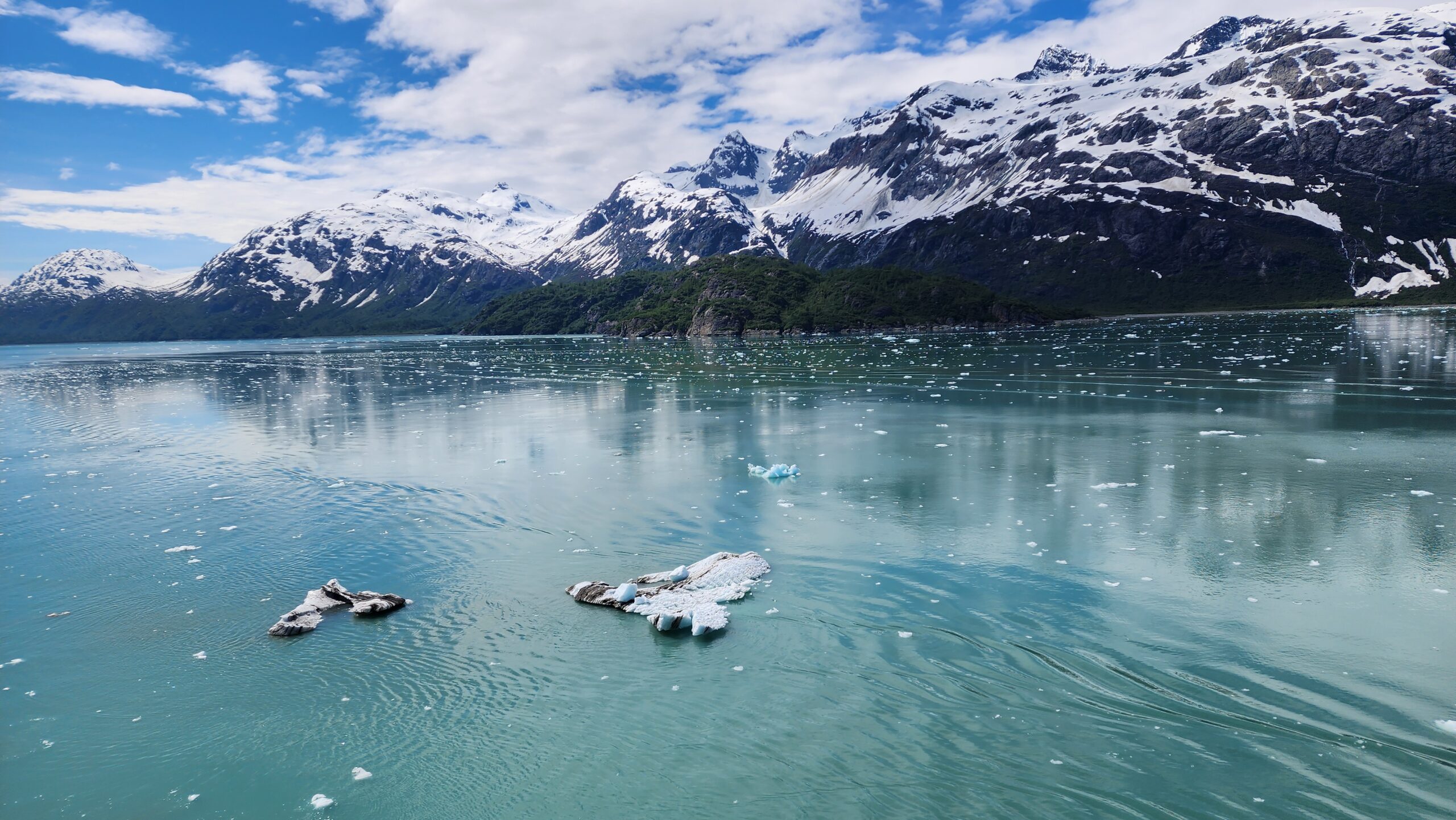Hello, adventurous souls! 🌟 Welcome to BubblyLiving, where the world is our playground, and every day is an opportunity for a new adventure! I’m Bubbly, a passionate traveler who thrives on exploring new places, meeting incredible people, and immersing myself in diverse cultures. My heart beats for travel, and I’m here to share my journey with you! From hidden gems to iconic landmarks, like Glacier Bay, I’m on a mission to inspire you to explore, discover, and embrace life’s adventures with joy and curiosity.
Now, let’s dive into my latest Alaskan escapade—Glacier Bay National Park and Preserve! This magical place is a true gem, filled with towering glaciers, untamed nature, and awe-inspiring scenery. If you’re ready to dive into a world of icy wonders and natural beauty, let’s set sail on this unforgettable journey together!
A Glimpse of Glacier Bay
Glacier Bay National Park and Preserve is a treasure trove of natural wonders. Covering over 3.3 million acres, this UNESCO World Heritage site is home to some of the most stunning glaciers and diverse wildlife on the planet. The bay was first explored by Europeans in 1794 when Captain George Vancouver and his crew charted the area. Later, in 1879 and 1880, naturalist John Muir visited Glacier Bay, documenting its beauty and raising awareness about its importance. His writings and advocacy played a crucial role in the preservation and appreciation of this spectacular place. Whether you’re cruising through the bay, kayaking along its serene waters, or hiking its rugged trails, every moment here is filled with awe and inspiration.
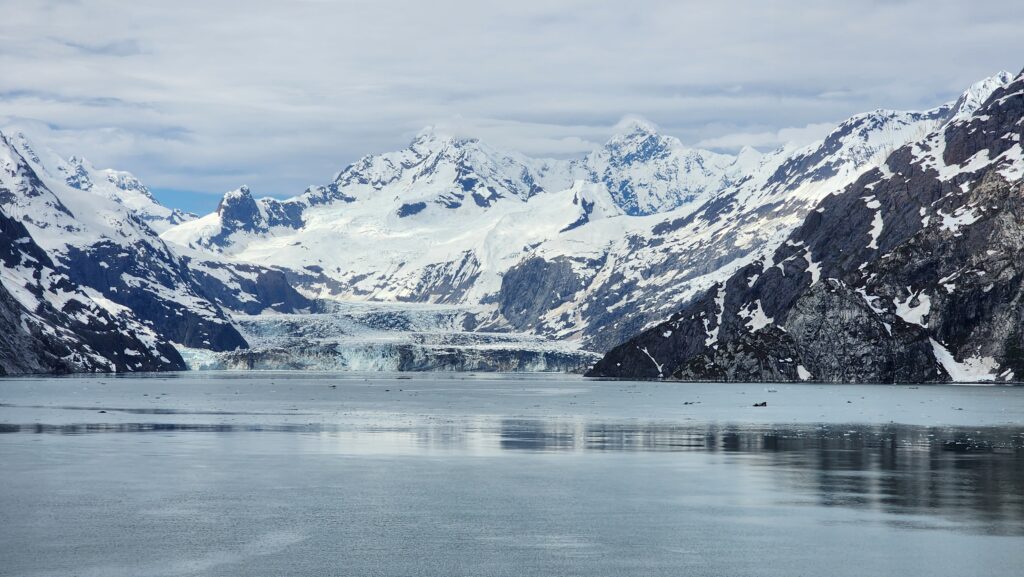
Towering Glaciers and Icy Marvels
Two of the most iconic glaciers in Glacier Bay are the Lamplugh Glacier and the Margerie Glacier. Lamplugh Glacier dazzles with its deep blue ice, a color that comes from the dense, compacted ice absorbing all colors of the spectrum except blue. Margerie Glacier is equally stunning, with its towering face reaching heights of up to 250 feet above the waterline and an additional 100 feet below. The sight of these glaciers calving—where chunks of ice break off and crash into the water—is a thrilling experience you won’t forget.
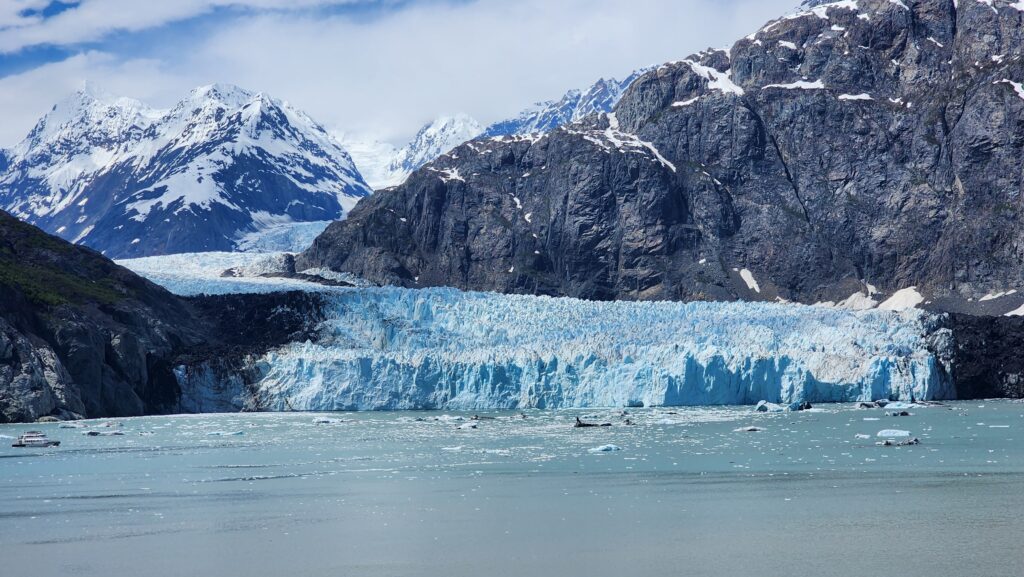
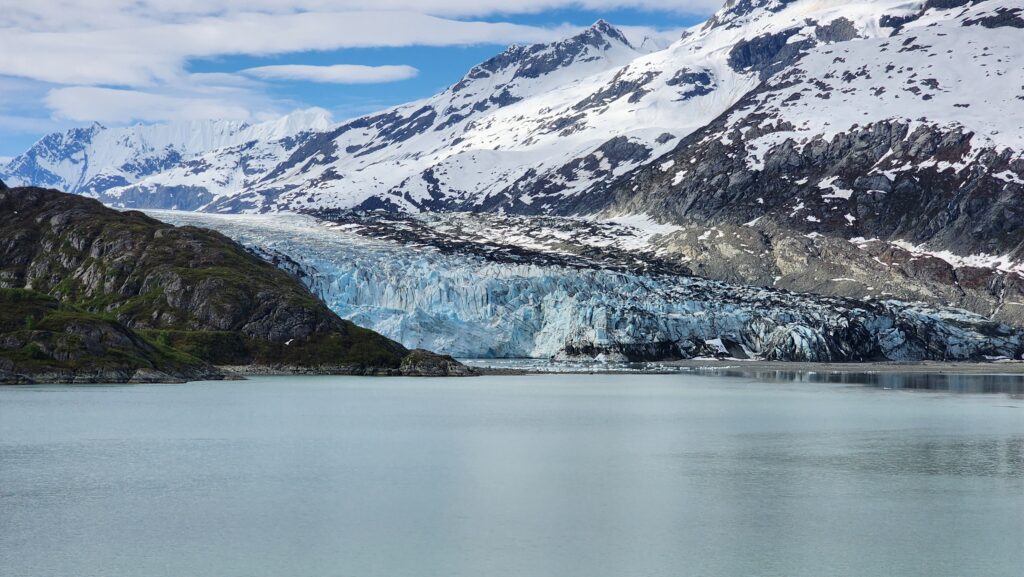
Untamed Nature
Glacier Bay is a haven for wildlife enthusiasts. Keep your eyes peeled for humpback whales, orcas, sea otters, and harbor seals frolicking in the bay. The surrounding forests and mountains are home to bears, moose, and mountain goats. The park’s rich biodiversity and pristine landscapes make it a paradise for nature lovers.
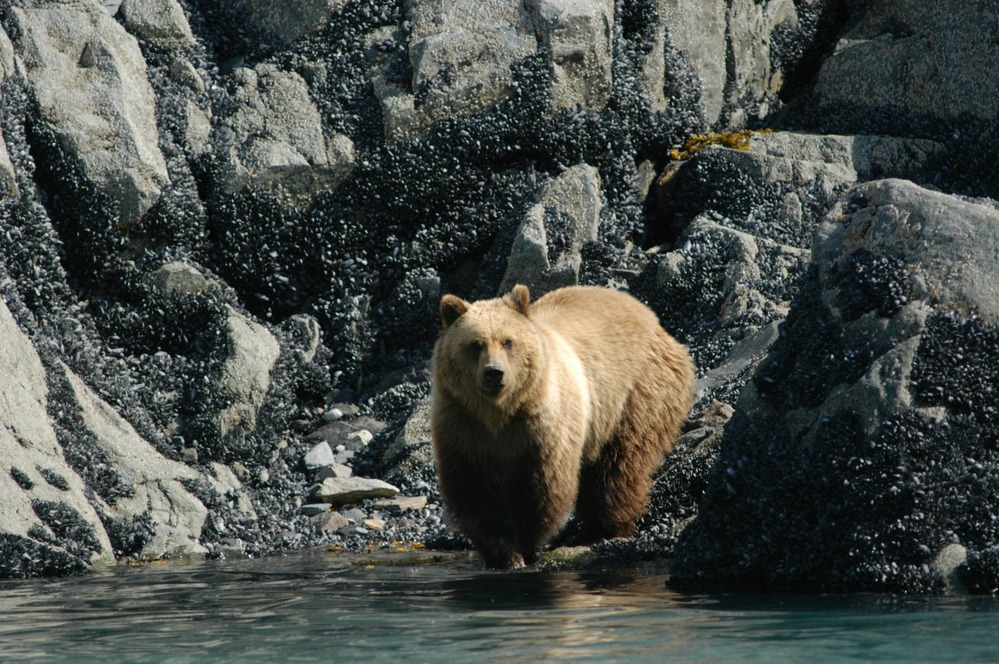
Keeping Glacier Bay Pristine
One of the most important aspects of visiting Glacier Bay is ensuring that we help keep it beautiful and pristine. Visitors are encouraged to follow Leave No Trace (The 7 Principles – Leave No Trace Center for Outdoor Ethics) principles, respect wildlife, and be mindful of their impact on this delicate ecosystem. By doing so, we can ensure that future generations can enjoy this incredible natural wonder just as we have.
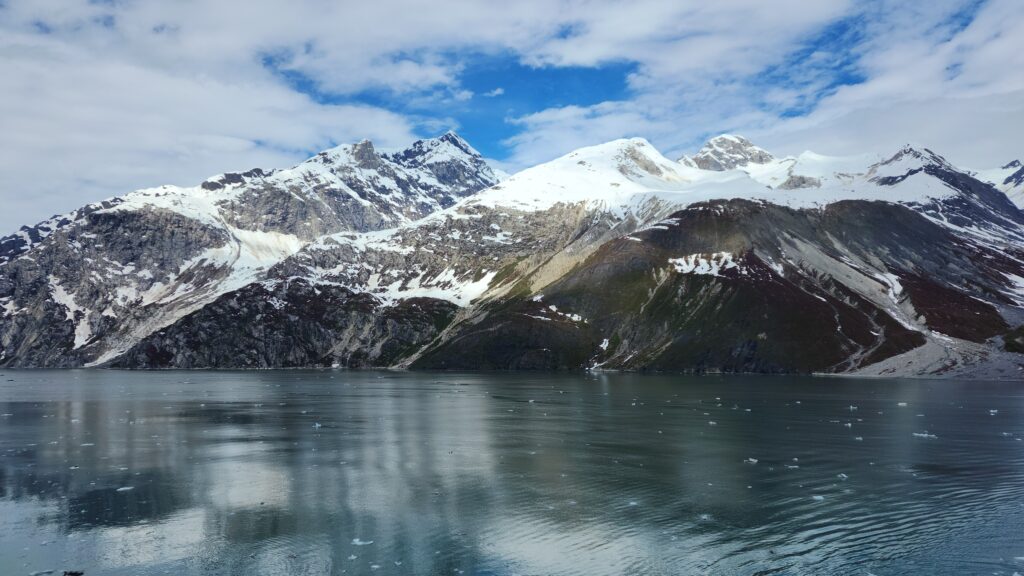
Top Questions About Glacier Bay
The blue color of glacier ice is due to the dense, compacted ice absorbing all colors of the spectrum except blue, which is reflected back to our eyes.
While the bay itself doesn’t completely freeze due to the tides and currents, the surrounding areas can experience significant ice formation.
Access to Glacier Bay by large vessels is regulated to protect the delicate environment. Special permits are required, and only a limited number of ships are allowed each day.
Whales can be spotted throughout Glacier Bay, especially during the summer months. Humpback whales are the most common, but you might also see orcas and other marine life.
The face of Margerie Glacier stands about 250 feet above the waterline and extends another 100 feet below.
The Grand Pacific Glacier appears dirty because it carries a lot of debris and sediment from the land as it moves, giving it a muddy appearance.
Glacier Bay reaches depths of up to 1,410 feet, making it a deep fjord carved by ancient glaciers.
Glacier calving is relatively common, especially during the warmer months. Patience is key, and you may be rewarded with the spectacular sight and sound of ice breaking away.
Weather in Glacier Bay can be quite variable. Summers are cool and damp, with temperatures ranging from 50°F to 60°F (10°C to 16°C). Be prepared for rain and always dress in layers.
Yes, climate change is impacting glaciers worldwide, including those in Glacier Bay. Many glaciers are retreating due to warming temperatures, making it even more important to appreciate and protect these natural wonders.
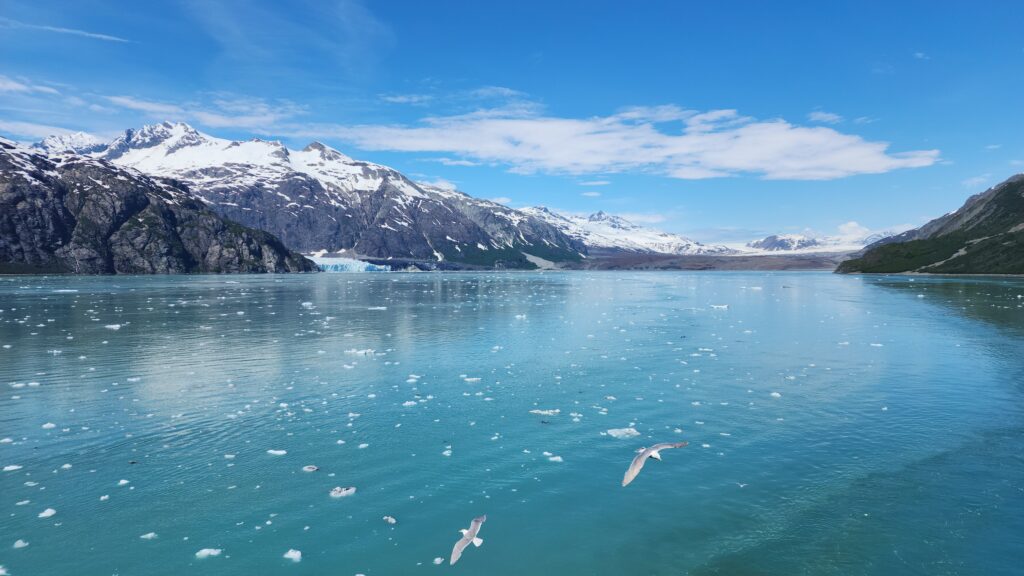
Final Thoughts
Visiting Glacier Bay National Park and Preserve was an awe-inspiring adventure that left me in absolute wonder of nature’s power and beauty. From the towering glaciers and diverse wildlife to the serene, untamed landscapes, every moment was filled with magic and discovery. If you have the chance to visit this incredible place, don’t hesitate—it’s an experience of a lifetime.
Until next time, keep bubbling with joy and curiosity! Remember, life’s too short for dull moments. Keep exploring, keep loving, and keep living. Sending you all my bubbliest vibes!
Xoxo,
Bubbly🎈

